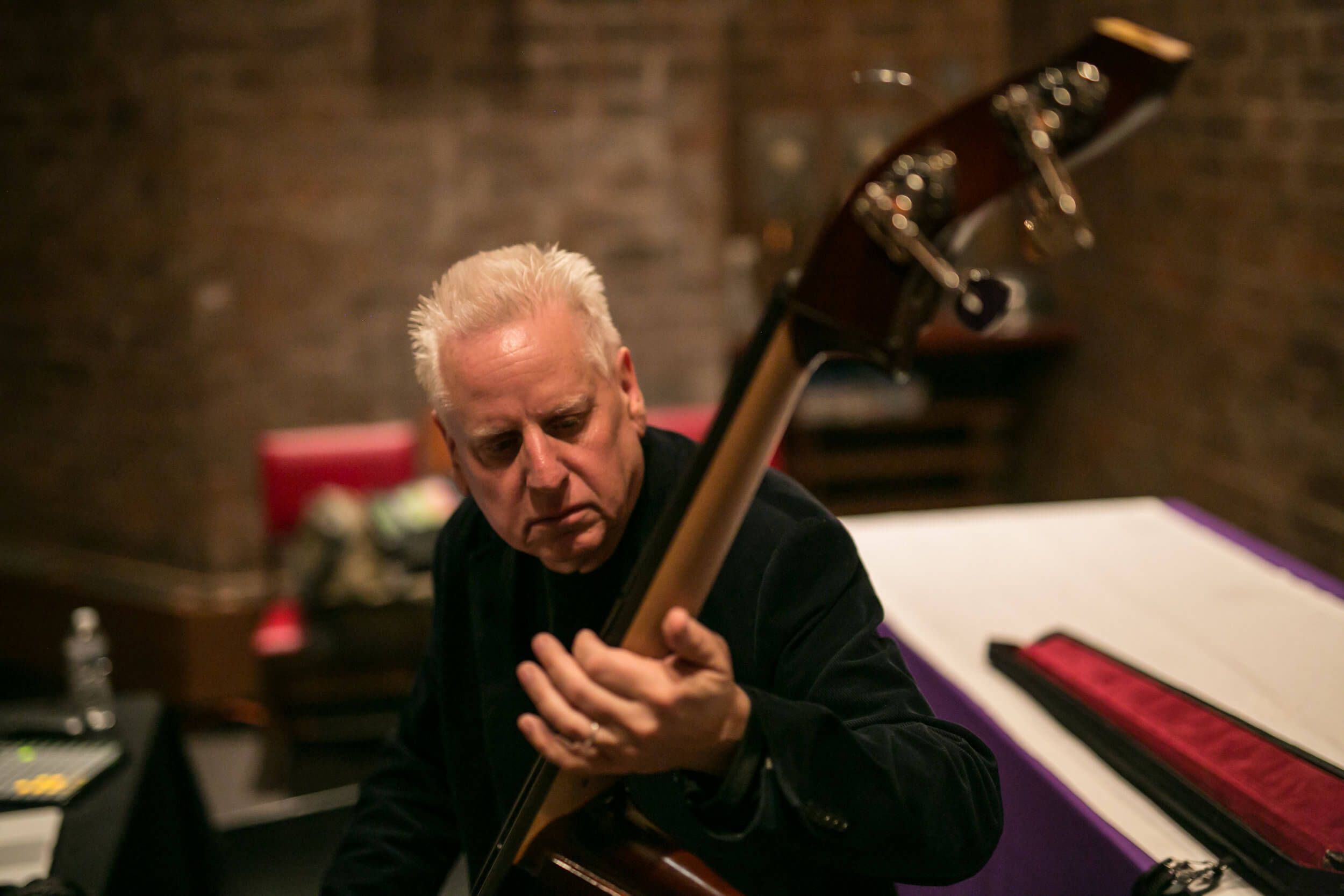
Arnold Dreyblatt :: The Aquarium Drunkard Interview
Arnold Dreyblatt makes the only minimalist music I know of that can accurately be described as badass. Since the late 1970s, he’s been exploring the endless world of string resonance: hitting or “exciting” the piano strings on his upright bass, kicking up overtones and vibrations and exploring microtones within his tuning system (which has stayed the same for almost half a century). His compositions are droning and deeply rhythmic, and over time he’s added drums to the mix. Listening to Dreyblatt is an energizing thing, more rooted in the body than in the head. His music sticks out in the often-intellectualized experimental world he comes from.
Dreyblatt started as a video artist before diving into the Downtown New York avant-garde music scene of the ’70s and ’80s. He studied with La Monte Young, Pandit Pran Nath, Tony Conrad, Phill Niblock, and Alvin Lucier, and he considers deep listening pioneer Pauline Oliveros his first music teacher. During his time in New York, he played with Arthur Russell, rubbed shoulders with Julius Eastman, and collaborated with Ellen Fullman. Since moving to Berlin in 1984, Dreyblatt has taught workshops, continued his visual art practice, built his own instruments, and performed all over the world with dozens of collaborators. (Check out his amazing website, which is an archivist’s dream)
This month, Drag City released his new album, Resolve, credited to Dreyblatt and his Orchestra Of Excited Strings. Like Dreyblatt’s compositions, the Orchestra has been a steady but ever-changing organism over the decades. First formed in 1979, the ensemble now includes two German musicians—Konrad Sprenger (a.k.a. Jörg Hiller) on percussion and computer-controlled guitar and Joachim Schütz on guitar—as well as Australian guitarist Oren Ambarchi. Across four songs, the quartet drones and dances, testifying that there’s complexity, even infinity, in simplicity. The Bandcamp page instructs: PLAY LOUD.
A few days before the release of Resolve, Dreyblatt chatted with me from his Berlin home base. He’s a fountain of ideas, connections, and inspirations. In this edited interview, Dreyblatt talks about the long-gestating roots of Resolve, coming to music from a visual art background, collaborating with Megafaun and Jim O’Rourke, and the enduring rhythms of Bo Diddley.
AD: What do you look for in collaborators?
Arnold Dreyblatt: That’s an important question. I’ve had these bands over the years. I mean, the moniker Orchestra of Excited Strings [has existed] since 1979, or at least the first ensemble was 1980. And it’s been a lot of musicians that have passed through, with very different backgrounds. Like, really well trained musicians who are trained classically, [as well as] those who are coming from a rock background, [or an] experimental background. But it’s really varied over the years.
I think actually what’s been the most important aspect is a certain kind of sensitivity to the sound. There’s having some experience playing within a minimalist context. It was very important to me, the kind of timbre of each instrument and how they fit together. I like to say that actually the musicians are there to release the resonance in the instrument. The opposite would be like the virtuoso who kind of bends the instrument to his or her desires and makes it do what it maybe wasn’t even designed to do. But I see the role [as] letting [the instrument’s] resonance out.
Read more of my interview with the incredible/inspiring Arnold Dreyblatt at Aquarium Drunkard.